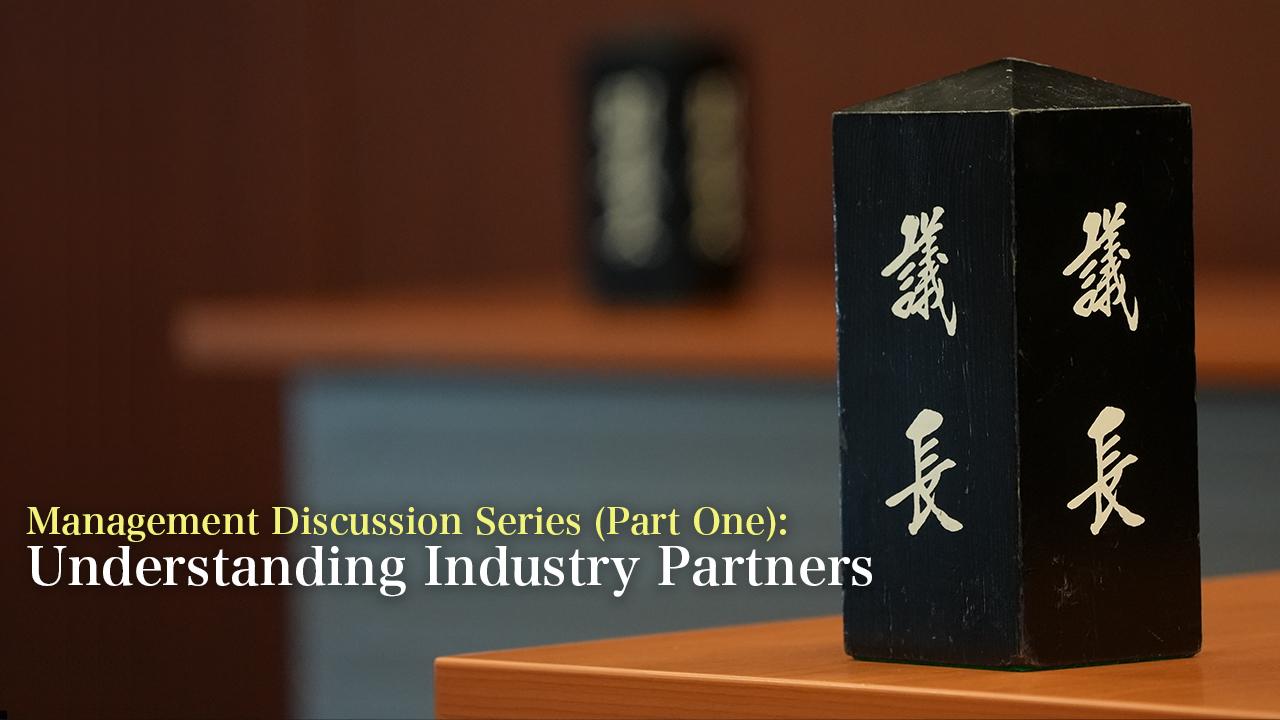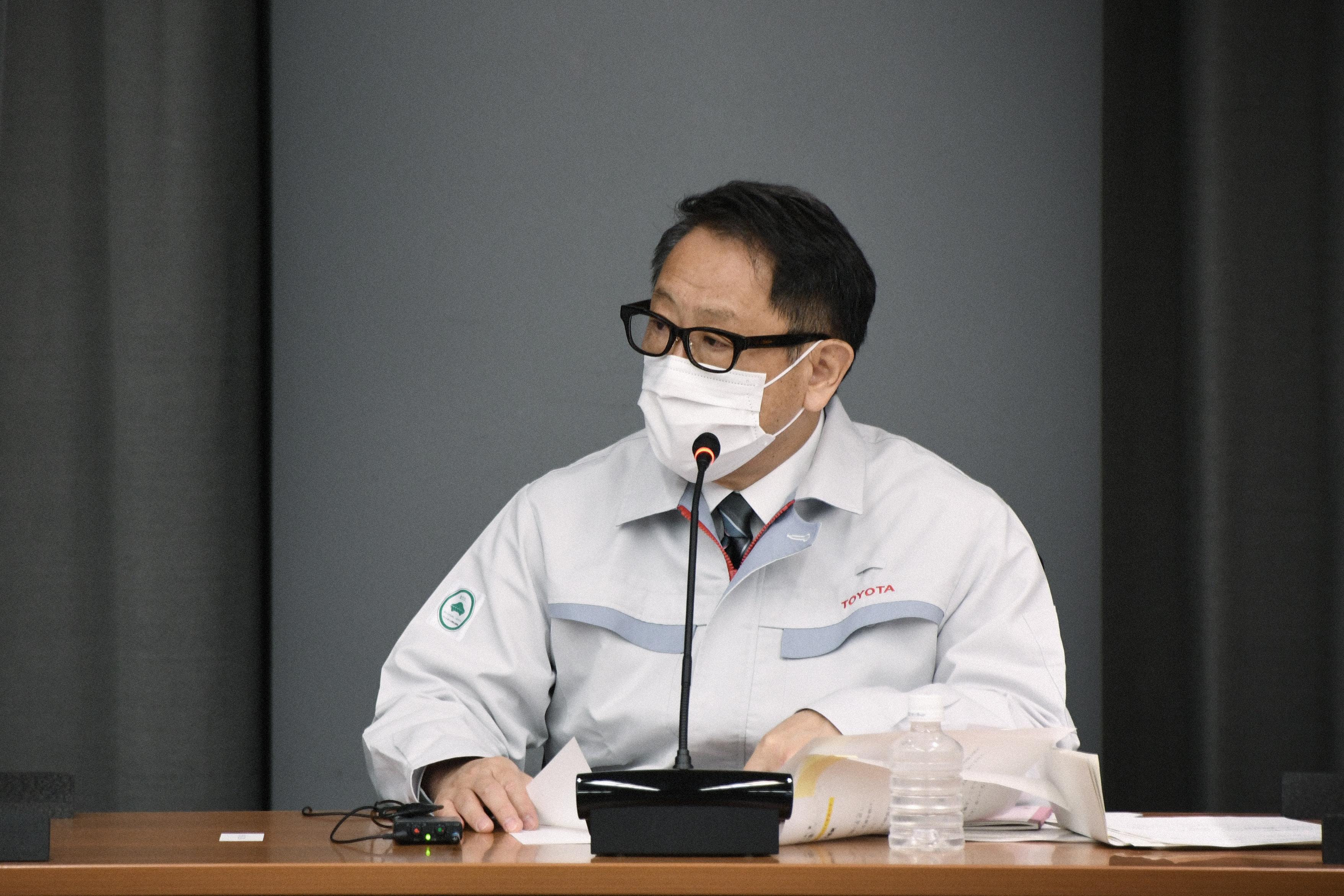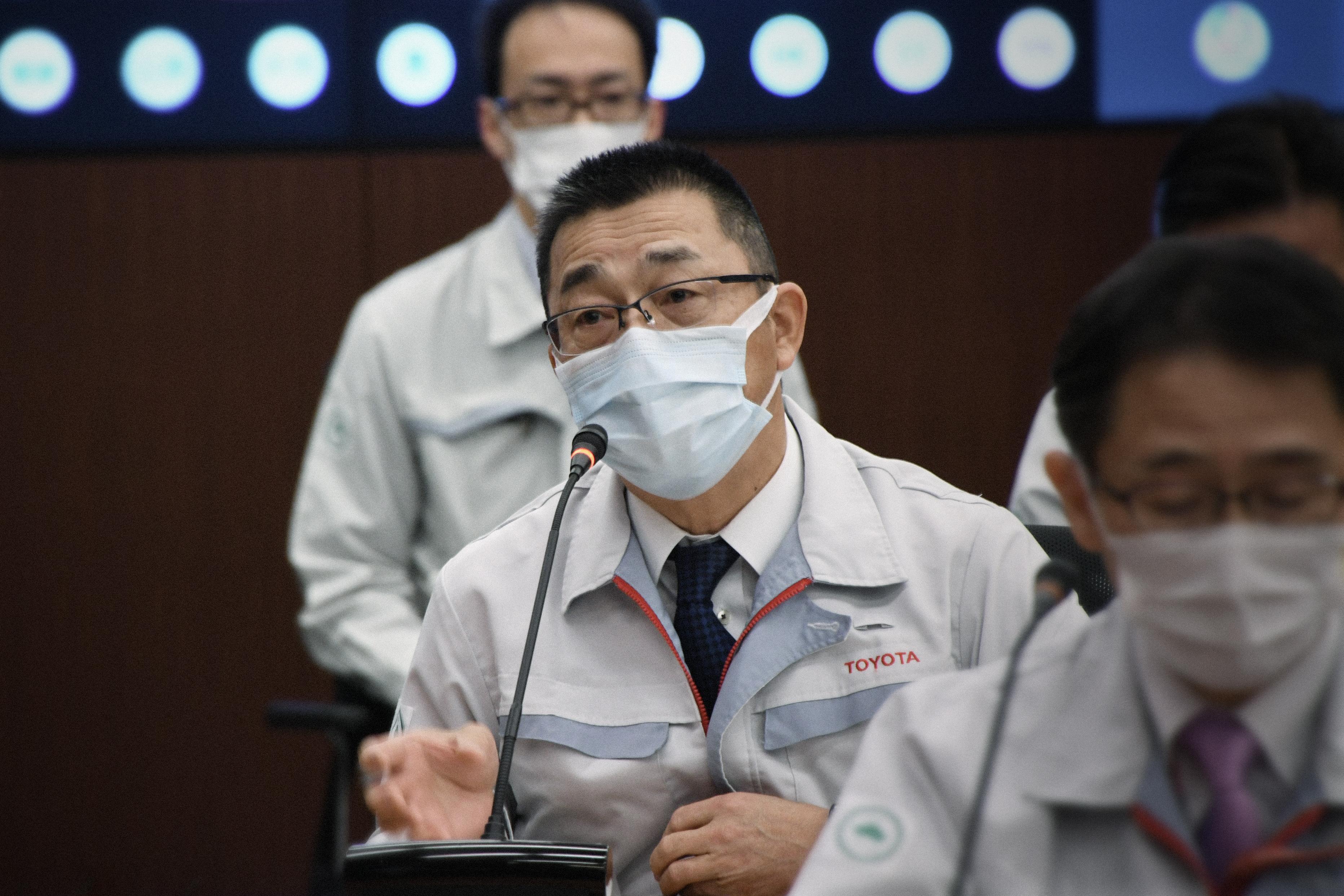
Recent discussions between Toyota management and workers in Japan included revelations made from team members seconded to other companies to go and see those operations, illuminating areas for improvement within the greater automotive industry in Japan.

Every spring at TMC, there is an occasion for company management and employee representatives to discuss company-wide workplace and management issues while looking back on the past year.
Just as TMC convenes its Ordinary General Shareholders’ Meeting to communicate with shareholders about company management, the discussions with employee representatives outline the progress and challenges of the past year and serve as an opportunity for management and employees to have a shared awareness of the way forward.
The discussions are based on the mutual trust and a shared foundation that have been built up over the years in which “the company wishes for the happiness of its employees, and the employees wish for the development of the company”.
The contents of these discussions are usually shared only within the company, but since its launch in 2019, the Japanese version of Toyota Times has shared highlights of the contents discussed at the meeting, striving for transparency.
Having launched the English version of Toyota Times in the middle of 2020, this year, with so many interesting and valuable things discussed at these meetings, it was decided to also share some highlight excerpts here, with a strong emphasis on the responses and comments made by Toyota’s management.

What can we do for our partners and colleagues in the automobile industry?
This year, attendance was limited at the physical venue due to the ongoing pandemic, but Toyota’s operating officers including President Akio Toyoda, chief officers, and presidents of TMC’s in-house companies were still able to attend an appropriately socially-distanced first discussion, held on February 24. In total, 380 people participated, including employee representatives from various workplaces on-site as well as via virtual online participation.
At the beginning of the first discussion, Akio presented a major theme for this year: “How can Toyota become a presence that invites our colleagues in the automobile industry to say ‘Thank you’ to us? We need to think through how we fit in and contribute to the overall industry.”
The automobile industry has an extremely wide base, both in Japan and overseas. Only looking at Japan, Toyota has over 70,000 employees, and there are 5.5 million people involved in Japan’s overall automobile industry. Amid the COVID-19 crisis, Japan’s entire automobile industry has been working together as a whole with the desire to become a driving force for economic recovery.
Unless all the individual companies find a way to come together, the industry will struggle to flourish with the issues it faces: namely, how to recover from the COVID-19 crisis and realize a carbon-neutral society. Toyota is in a position and it may even be said that the company has the responsibility to lead the industry’s efforts for these issues.
That is why Akio shared the message for why Toyota’s team members need to think about how they should help the company become a presence that others in the same industry can be thankful for and depend on.
It was with thoughts such as these that kicked off this year’s discussions.

Know the actual worksites of suppliers
The first topic at the meeting centered on the relationships the company has with suppliers and dealers, key partners in Toyota’s business. At TMC, a training program recently launched to have employees seconded to suppliers and dealers. This was seen as a way where they could strive and are working diligently to be useful to others while also working together. In a way, this also comes full circle to then contribute to their own growth.
Addressing the issue of “Does Toyota really understand the conditions of others’ worksites?”, some of the seconded team members shared their real and unfiltered experiences during the discussion.
“At one supplier’s worksite, due to a shortage of personnel, production workers themselves do maintenance (equipment maintenance, inspection, and repair).”
“When starting a new project, it’s not like there are various departments that are in charge (of certain elements of the project) within the company. So, you have to search the internet or make as many phone calls as possible, looking for a company that will work with you.”
To summarize the experience, Toyota team members may take for granted that what happens at Toyota is happening at all such companies in the industry, which is not necessarily true.
A particularly noteworthy comment made by one participant was: “For a supplier, Toyota is the customer. Hearing comments like: ‘If we complain to Toyota, we might lose work,’ I realized that suppliers have many problems that they can’t talk about out of fear.”
Another person, as he recalled the following, added that he caught sight of a point for kaizen or improvement: “Even inexperienced young people (at suppliers) are learning from their mistakes and are working on their own. But, at Toyota, young people can’t do that because they are afraid that mistakes will have such a major impact. We need to increase the opportunities for leaving things to young people on the assumption that they will fail more.”
After hearing such experiences, TMC Executive Fellow Mitsuru Kawai, who chaired the discussion, shared his thoughts.
Chairperson Mitsuru Kawai
Last year (2020), we had 140 people go to 70 companies (suppliers).
Actually, 24 years ago, before I became a section chief, I was dispatched to another company for one year as training. Upon arrival, I was told: “Go do it by yourself.”
I was given work clothes, and because I was told to start in the morning, I showed up the next day at 6 a.m. and greeted the people at the worksite. I tried to melt in and made frantic efforts to get into relationships in which people would teach me something.
Thanks to that, I truly learned a lot.
I came to very well understand the kinds of problems that suppliers have, and I learned of the warmth and homely atmosphere at suppliers. I learned more than I could ever talk about.
It was a much better way to learn than by writing reports.
Looking back on it, everyone says: “Suppliers are doing their best. I know perfectly well.” But the truth is that you can’t know what’s really going on unless you go and see for yourself.
Partially because of that, last year I started suggesting that we establish a seconded human resources development program.
However, some companies refused, saying that things were difficult enough on the receiving end due to COVID-19.
I was told off a lot, like: “Toyota people are always telling us what to do, so it’s just as well that no one comes.” But when a company said: “OK”, I jumped at it.
Along the way, I paid visits to a number of partners where the president would say words that I was happy to hear, like: “If that’s the kind of person you’re sending, please send more.”
Although it’s important to share with others what you learned after coming back (to Toyota from where you went during training), the best thing, after all, is creating a lot of people who have experienced things for themselves. Rather than having people hear about something, have them experience it.
Going forward, we will conduct special training (by sending people) outside. Office workers will also be included. We are creating a (human resources) bank of people, such as those in the technical fields, and we have started a system in which they can play an active role at suppliers and in various places using the abilities and knowledge they have cultivated so far. Let’s do it together.

Do you understand dealer worksites?
In the Japan Sales Business Group, 86 people have been assigned to dealers nationwide since January of this year. Similar to how the company is seconding people to suppliers, there is much to be unveiled by looking at things from an outside perspective.
And the team members weren’t shy in sharing the experiences they had when they were seconded to dealers.
One person said: “When I was at Toyota, I was wondering why there were so many inquiries (from dealers). But (while I was at one, I came to learn that) they only inquired about things that had been carefully selected to ask about.”
And in other cases: “They didn’t know who to contact, or they could never get hold of the person in charge. Some people just stopped seeking answers from Toyota because of that.”
A comment was also made about the range of work covered by one person, illustrating how different work at dealers is than at Toyota: “I received a consultation from a customer about something that was outside of my responsibility and I was not able to answer. But at dealers, one person has a wide range of responsibilities.
This is in contrast to how it is at Toyota, where (responsibility) segmentation is ingrained. People (at dealers) have more interest in tasks that are beyond their area of responsibility. My efforts to understand other’s roles and jobs at Toyota had been insufficient (before now).”
These were just some examples from what was shared, but the examples did not end there. Many members also talked about experiencing cases in which Toyota went about doing things in ways that it thought was right but that may not have been the best way to meet the needs of the sales site, leading to dissatisfaction both at the sales site and among customers, despite Toyota’s goal to look at things from the perspective of the worksite and practicing Customer First.
Management was also aware of many of the same issues.
Operating Officer Jun Nagata (of the Japan Sales Business Group)
The president told me that, rather than being uniform nationwide, unless we optimize sales activities for each region [in Japan] or even each store, we will lose our competitiveness.
However, we spent a lot of time in discussions with various dealers’ head offices, and even we were unaware of what our sales sites truly really needed or of their troubles. In the end, we spent two years trying to find that out.
I have a lot of remorse, and from now on, I believe that we have to change the way we work so we can support worksites.
As for vehicle servicing, another important function of dealers, Shinji Miyamoto, who is the chief officer of the Customer First Promotion Group and in charge of quality, shared his thoughts.
Chief Officer Shinji Miyamoto
Japan has a UIO of 77 million. This is supported by 400,000 people engaged in the maintenance business.
Though there have been declared states of emergency (related to the pandemic), the vehicle maintenance business has been designated as an essential business that must not be stopped.
Those doing repairs at dealerships are under immense pressure every day, and, even though going to work can be difficult, orders from customers keep coming in.
Because of the times that we’re in, people are asking for fast car inspections and want repairs done right away, making maintenance members struggle every day.
I hear stories about how all store members, including sales staff members, have to gather together and lend a hand, working until late at night to get the job done.
Under such circumstances, in something that we feel very sorry for, we are also requesting dealers to also handle recall work. That’s the reality. I thought I should share it with you here today.
Isn’t there more we can do for such people? How can we make maintenance easier and more efficient? Is there a good tool for doing so? And how can we make a car that doesn’t require a recall (that is without defects)?
At the same time, however, I have heard comments from dealers such as: “Toyota gave us face shields right when we needed them,” and “When our taxi drivers needed help, Toyota built partitions right away.” I was even thanked with the words: “I’ve never felt so grateful.”
I was deeply moved. I would like for us to discuss what more we can do for those people.

The idea that forms the basis of the so-called “Toyota Way” is genchi genbutsu (“go to the source to find the facts to make correct decisions, build consensus, and achieve goals at our best speed”).
Our efforts to go to the genba (worksites) to more deeply understand the suppliers who support our automobile manufacturing and of the dealers who build and maintain relationships with customers have only just begun.
There are many things wherein Toyota is insufficient and that Toyota is not putting to full use. As a company and team members, Toyota still has much to learn about its partners and colleagues in the automobile industry. As they deepen their discussions, management and employees create a shared awareness of these issues.
Next, in Part 2 of our series, Toyota Times will present the exchanges that took place during a separate discussion about “the growth of people working at Toyota”, which also takes into account the existence of the types of partners and colleagues mentioned in Part 1.
(Continued in Part 2.)

